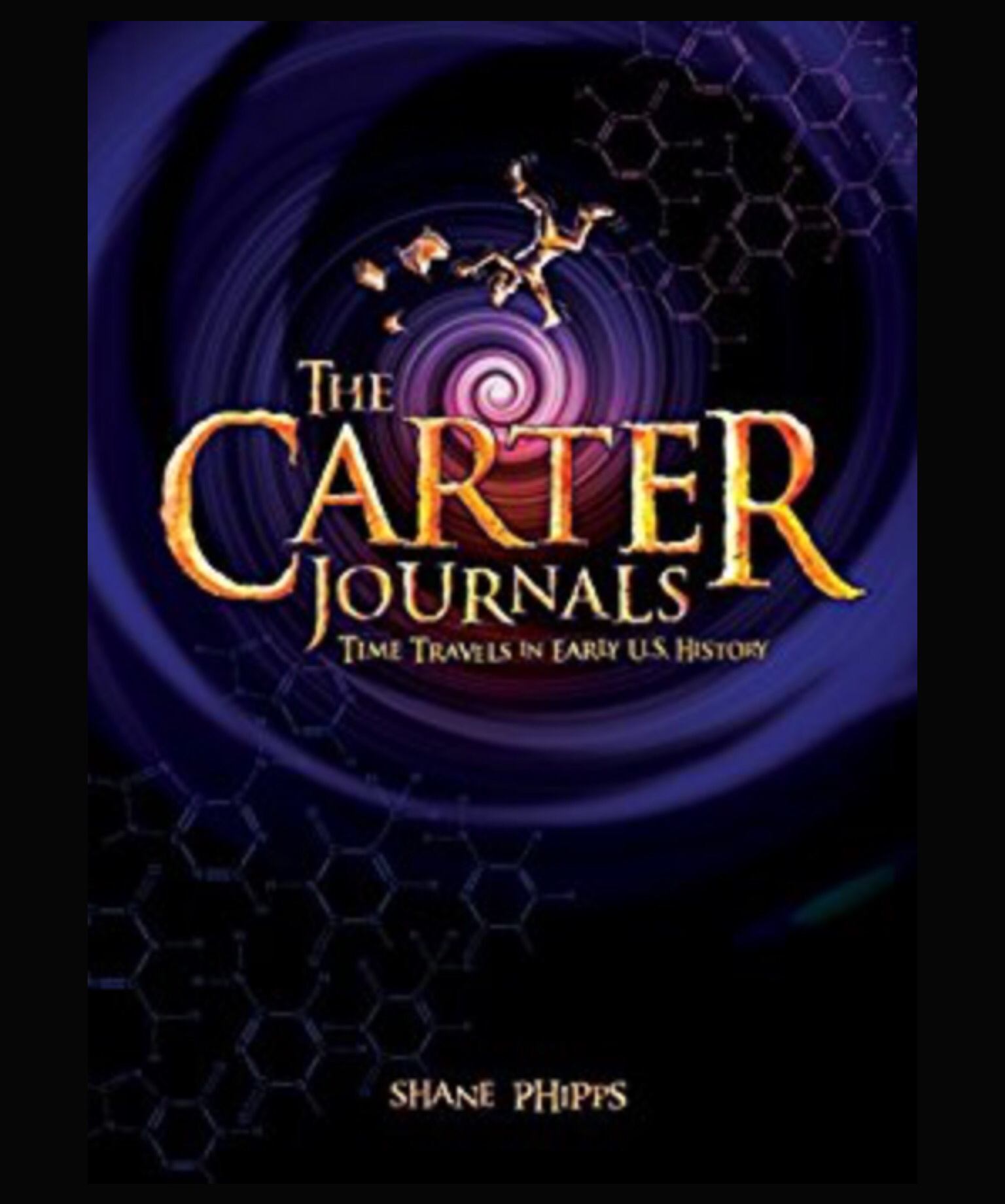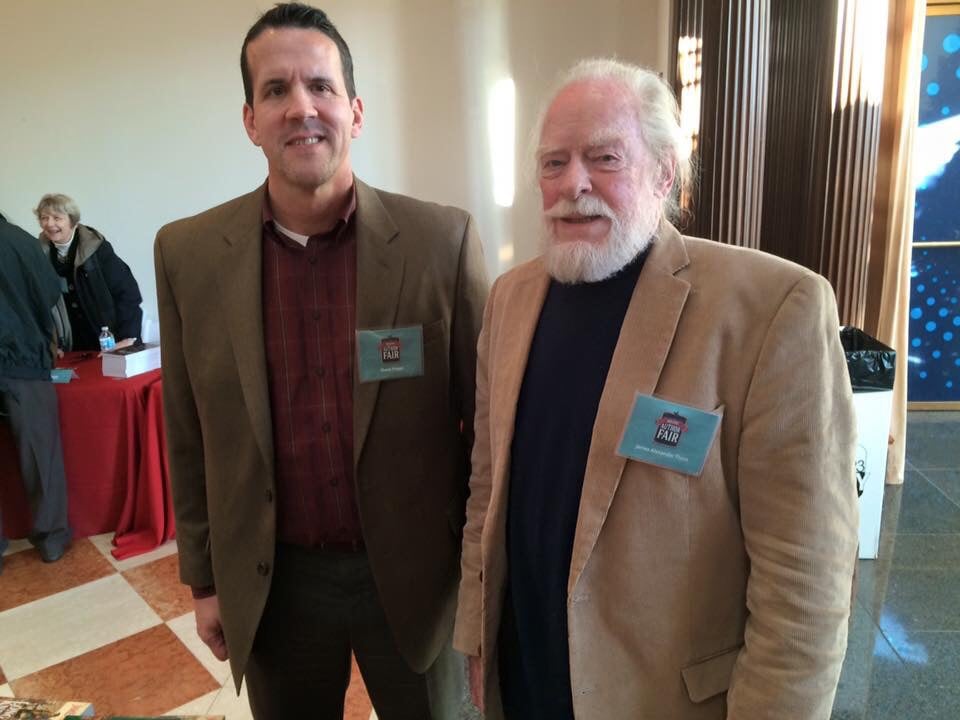Source: The Carter Journals: Time Travels in Early U.S. History
This is the story behind the story…
Whenever I am out doing anything book related, be it a signing event, tv or radio, a speaking presentation, etc., I am inevitably asked some of the same general questions. Is this a series or will there be a sequel? How long did it take you to write? Where did you come up with the idea?
The first of those questions is easy to answer. Yes, I hope to do at least one more book as part of The Carter Journals. After all, there were unread journals left in that old box.
The other two questions require a more lengthy and thoughtful answer. I will tell that story here…
The seeds of the idea for the book were first planted when I was a new history teacher in the early 2000’s. I saw right away that, to get teens interested in history, I was going to need to be entertaining. The best way to do that, and still educate, was to build my story base. Everyone loves a good story. So I began reading a lot of books that covered the part of U.S. history that I teach, colonial times through the Civil War. I found many of the stories that kids really responded to were those I pulled from some of the great historical fictions that are available from this time period. Great writers like James Alexander Thom and Allan Eckert turned historical events that can be a little dry in most textbooks into epic tales that a reader simply can’t put down. They read like great fiction but they are rooted in historical facts. Reading these types of books gave me a much bigger arsenal of interesting stories I could tell my students and made my class more entertaining to be sure, but I also wanted to set my students on a path of literacy and get them actively involved in reading and discovering these types of stories themselves. There are some problems associated with those types of books, though. They are written for adults. The reading level is a little too high for the typical 8th grader and, in many cases, the content can be little too graphic in nature for some of them as well. So, I began to look for books that my students could read that were more on their level. Certainly, there are some good ones…but they came with another challenge. Just about all the books I found were written about one event. This presents a problem for teachers in history classes. In order to devote enough time to reading a historical novel in class with students, one runs the risk of falling behind in the standards we are required to cover over the course of a school year. What I really needed was a story that would jump from one era to another across the timeline from the early 1700’s through the 1860’s. To my knowledge, there wasn’t anything out there to fit that description.
Now, I have always fancied myself a writer. From an early age, I loved to use my creativity to craft stories to entertain my friends. Even though I had never really pursued my writing as something to be published, I had prided myself on being able to express my thoughts and feelings, through the written word, in a way that others often seemed to enjoy. So, since I couldn’t find the type of book I was looking for, I thought, why not write it myself?
Seed takes root.
For the next several weeks, after getting the idea, I began to put the general outline of the timeline of the book together in my head. I also came up with the idea that I could have all these events happen to a single protagonist if I used some sort of time travel angle and began to work out those kinds of details as well.
Seed germinates.
I was pretty sure I had a good idea going. I could see how the book would appeal to teachers who could use it throughout a school year instead of having to read it all at once. I was confident that I could put this together and I thought it may just have a market out there. So, the big question was, who might want to publish it? My wife saw that the Indiana Historical Society Press took submissions for young adult historical fiction. Ah ha! That had possibilities! I even had some experience there and knew a name to contact. As I was finishing my undergrad studies, I worked part-time helping to set up the I.H.S. History Market bookstore and gift shop back when it first opened. From my time there, I remembered the name of Ray Boomhower who was one of the editors at the press and I knew that he had authored several books. I reached out to him through an email and sort of pitched him the idea that I had. He seemed to like it and put me in touch with Teresa Baer and that sent the ball rolling. Once I had an agreement with them, the rest of the writing process is a bit of a blur. I was consumed with finding the right events and doing the research for it and weaving it all together into one story. In the end, I settled on the decision that I would focus on some of the lesser known events in history, partly because the more known events are, presumably, already being well covered in class, so why not add a little depth of knowledge by focusing on some parallel events on the timeline. In retrospect, that decision had a nice side-effect in that it also turned out to be something that appeals to adults who read the book, as I hear feedback from them that they learned quite a few things that they didn’t know because they never were taught about them in school. The actual process of physically writing the book took me a few weeks. The words and stories came fast once I began. The seed had been germinating for years, but once it began to sprout, it produced fruit very quickly.
So there you have it. That is the story behind the story of how I decided that Cody Carter would discover his connection to history first hand through the “magical” journals of his teenage ancestors.
Click here to “like” The Carter Journals on Facebook. Get news updates about anything related to the book and any possible sequels.














